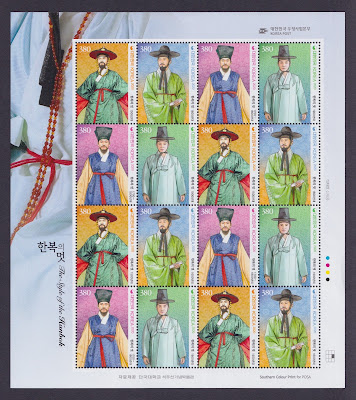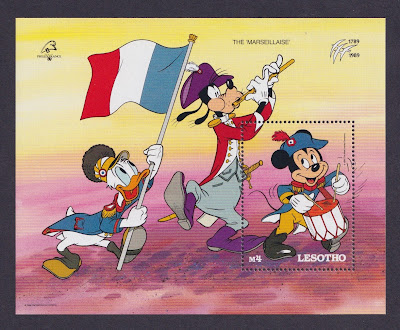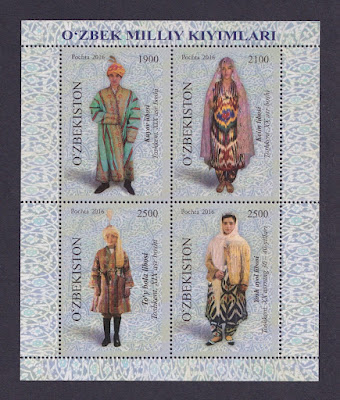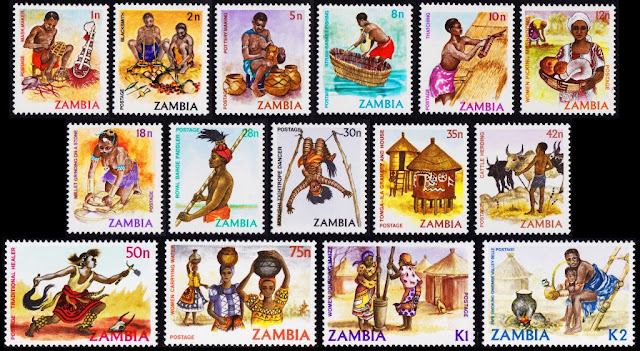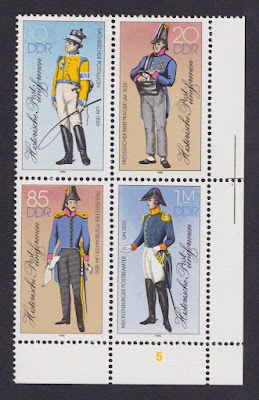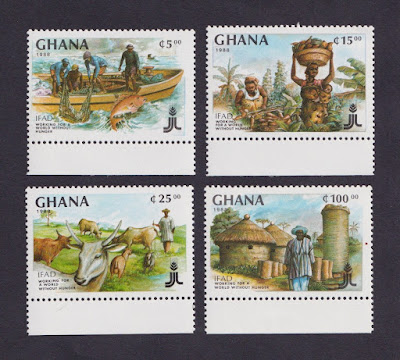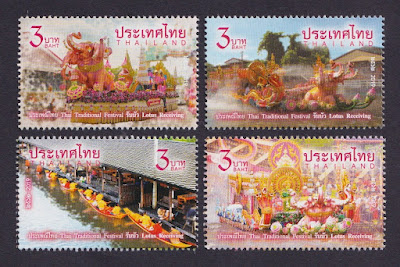Technical Details:
Date of Issued: 12 February 2023Denomination : 25.00 Indian Rupees
Printed : 111,000 each
Process : Wet Offset
Printer : Security Printing Press, Hyderabad
Stamp/Souvenir Sheet/FDC/Brochure: Smt Gulistaan
Cancellation Cachet: Smt Nenu Gupta
Souvenir Sheet: Designed by Smt Gulistaan based on photographs arranged by Smt. Gulistaan, Sh. Amit Pandey and Sh. Ashish Raina.
Text : Sh. Pallab Bose
Bridal Costumes of India Weddings are a great way to experience the first hand experience of the culture, rituals, food habits, clothing and lifestyles of any community. In India, wedding is a celebration, where everyone is invited to bless, bride and groom on their new journey.
Red is the predominant color of bridal custom in India. In our culture, it means new beginnings, passion, and prosperity. Red also represents the Hindu goddess Durga, who symbolizes new beginnings and feminine power. In Indian culture, the woman is the one who is leaving her house and going to the man’s house to be with his family. It’s a far bigger change for the woman than the man, so it is appropriate that she be the one commanding the most attention and wearing a bold color like red that symbolizes new life.
The Indian bride usually wears a wedding sari orlehenga according to the regional traditions. In Indian culture, wedding dress of a bride comes from groom's side as a Shagun. While the saree is preferred as the bridal dress in South India, West and East India, traditional wear such as the mekhela sador is preferred in North-east India and brides of the North of India prefer Lehenga, Gagra Choli and Odni as bridal dresses.
The Kashmiri bride complement her looks with weaved saress which are remarkably jazzy due its adorned work. The bride completes her wedding look with Tarang, Kalpush, Zoojhis and matching dupatta. Their jewelry consists of heavy necklaces, bangles, payals and special ornament called Dejharoo, akin to a Mangalsutra in Indian culture.
The Punjabi Brides wear a Salwar Kameez, an extremely opulent pant suit, or lengha. The bride wears white and dark red bangles made of ivory known as ‘Chooda’. They are usually in multiples of four and according to tradition the bride must wear it for at least a year after her marriage. Chooda and Kaleeras are the real essentials of a Punjabi bride’s wedding day look.
The outfit of a Manipuri bride is colorful and has a distinct style which is hard to find in any other community. A traditional Manipuri bride dons a skirt called Raslila on her wedding occasion. The Chakmas brides also wear black and red sarong which is also known as Pindhan in the local language. This entire outfit is teamed up with a blouse known as Silum. The Magh brides from the Manipuri community don the Thami sarong that covers almost the entire body and is coupled with a choli or a blouse which is full sleeved. The traditional outfit of a Manipuri bride is accessorized with the basic ornaments such as bangles, nose rings, necklaces and earrings.
The Bengali bride wears a Banarasi saree. Most Bengali brides prefer to wear a red Banarasi saree embellished with gold details or embroidery to match the gold jewellery. The traditional Bengali bridal look comprises of a beautiful red Banarasi saree, alta or red water colour on the hands and feet, mathapatti, necklaces, mukut and red and white bangles with gold.
The Marathi bride during the wedding put on a beautiful yellow or green Paithani saree with a golden border, hair tied in a neat bun, decorated with pearl ornaments and Gajra. The Paithani saree can either be woven in Kanjeevaram silk or even Banarasi silk. Most Paithani sarees have peacock and mango motifs of the Pallu and a square block design on the border. Mundavalya is the red and white beaded string like an ornament that the bride and wears across their forehead during their wedding ceremony. Two beaded string also fall from the string on either side on the forehead. Kolhapuri Saaz is the mangalsutra of Marathi brides.
The Gujarati bridal saree is called as a Panetar. Gujarati brides prefer to wear the traditional cream/ white and red saree for the wedding rituals. Many brides also choose Panetar style wedding lehenga choli that is made in white/ cream and red colors. Kundan necklace, heavy Jadau earrings or Jhumkas, also known as ‘kan ni butti’ in Gujarati, rings, Nathani or nose ring, armlets, hand ornaments, anklets, bangles, hair ornaments and Maang tikka or the forehead jewelry comprising of the entire array of jewels the bride adorns herself with.
Gujrati Brides also wear fine Bandhani sarees during their wedding ceremonies. One such glorious Bandhani saree is called as Gharchola – which is traditionally made in the colors of red/ maroon and green with Bandhani work and metallic and thread embroidery.
Tamilian brides dignify their wedding look with Kanchipuram Saree or Madurai Silk. A typical tamil bride usually wears a Kanjeevaram Saree in hues of bright colors with contrasting borders that have gold threads woven into beautiful patterns. Tamil bride is adorned with gorgeous looking heavy gold jewelry, passed on from one generation to the next. A few prominent jewelry pieces that adorn a Tamil bride are Metti (Toe Ring), Kolusu (Anklet), Oddiyanam (HipBelt), Vanki (Armlets), Maanga Malai (Mango shaped necklace), Nose Ring or Nose Stud, Earrings, Thalaisamaan (on forehead), Jadanagam (decorated braid). No tamil marriage is complete without wearing the flowers on the women’s head.
The Malayali bride wears a white saree with a golden border known as ‘kasavu saree ’. The Kerala bride has started pairing her traditional white and gold saree with a shiny red silk blouse, layered gold jewellery and lots of flowers in her hair Her minimal jewelry and makeup, matching bangles and that oh-so-pretty Kamar Bandh are enough to make her look like a perfect Kerala bride.
Department of Posts is pleased to issue two sets of Souvenir Sheet with commemorative postage stamps Bridal Costumes of India and celebrates the vibrant colors and spirit of Indian weddings.

